Our history goes back to 1877, when Yaoya Shinsaburo, the adopted son of Yaoya Jinbei, a merchant serving the Iwakuni Kikkawa Domain, branched off from the family business and moved premises into a former tearoom used by the Kikkawa lords near the mouth of the Nishiki river. There, he started a company he called Yaoshin. A hikifuda, or announcement flier, still records the details of the business from that time. According to the hikifuda, while the old company Yaojin primarily made soy sauce, Shinsaburo was first and foremost a saké brewer. However, the company did also make soy sauce, among other lines of business, and operated as a general merchant. One of those other lines was running an ice supply business using their unique ice storage facility. But above all, it is in the saké business that Shinsaburo’s independent spirit shined. The brewery’s initial label was Shingiku, combining the “Shin” from Shinsaburo with “Kiku,” his wife’s name.
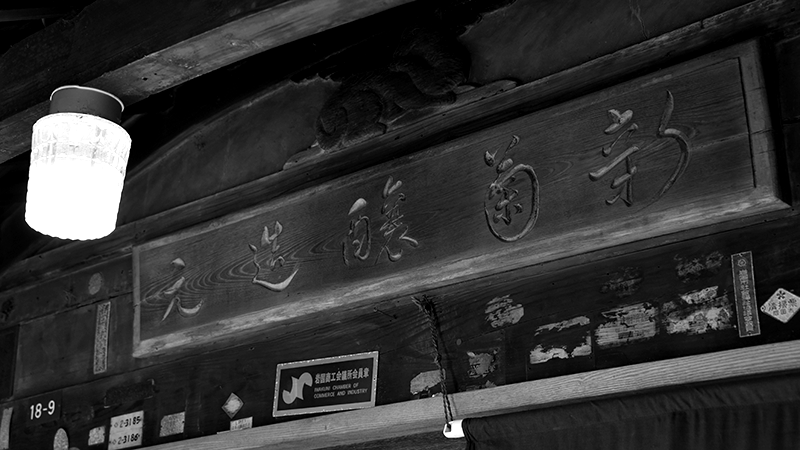
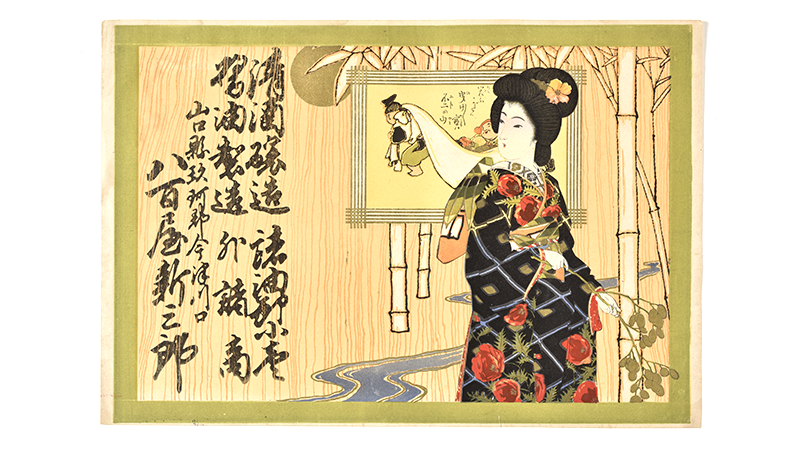
Yaoya Osamu eventually took over from Shinsaburo, becoming the second generation kuramoto (owner and manager), and he quickly eliminated the soy sauce manufacturing business altogether to focus on saké brewing. He helped raise Shingiku to become the top selling saké in the Iwakuni area. At the same time, he also expanded into selling beer and western liquors as a general liquor wholesaler. This period, with Osamu at the helm, was to be a golden age for Yaoshin Shoten (the company’s operating name).
However, rice shortages during and after the Pacific War resulted in difficulties obtaining it for saké making, and so the government encouraged the “triple-yield” brewing method. This required adding massive amounts of brewer’s alcohol and sugar to increase outputs, while reducing rice usage. Brewers all over Japan had no choice but to comply. Yaoshin was no exception, so they adopted triple-yield brewing, but with a tōji (brew master) who had only ever made saké from rice alone, they were unable to produce saké of a quality comparable to their competitors. And thus, Shingiku began to lose its reputation, and with it its local market share. At the same time, the general liquor wholesale side of the business was growing steadily, and in the 1950s it was spun off into Yaoshin Shurui Hanbai liquor sales. After this, the saké side of the business, Yaoshin Shoten, was completely overshadowed.
However, rice shortages during and after the Pacific War resulted in difficulties obtaining it for saké making, and so the government encouraged the “triple-yield” brewing method. This required adding massive amounts of brewer’s alcohol and sugar to increase outputs, while reducing rice usage. Brewers all over Japan had no choice but to comply. Yaoshin was no exception, so they adopted triple-yield brewing, but with a tōji (brew master) who had only ever made saké from rice alone, they were unable to produce saké of a quality comparable to their competitors. And thus, Shingiku began to lose its reputation, and with it its local market share. At the same time, the general liquor wholesale side of the business was growing steadily, and in the 1950s it was spun off into Yaoshin Shurui Hanbai liquor sales. After this, the saké side of the business, Yaoshin Shoten, was completely overshadowed.
Third generation kuramoto Kobayashi Tomoji studied in the department of Fermentology at Hiroshima Technical Highschool (now Hiroshima University School of Engineering), and he worked with the new tōji brew master Harada to help improve the quality of their saké. Tomoji researched steaming in his post-graduate research, and was even awarded a theoretical patent for his work on using inert gases mixed with the steam to achieve the ideal gaikō-nainan texture (hard exterior, soft interior) in brewing rice. However, Shingiku had already acquired a reputation for low quality, so all their work still failed in restoring the saké’s former market share. The competition continued to increase their lead. Yaoshin fell into a vicious cycle of being unable to sell what saké they made, leading to a backup of stock, which reduced the appeal of the saké. Eventually the brewery was forced to consider whether to go dormant and take a break from brewing, or keep at it.
This was a serious issue. Traditional saké brewing is seasonal work, done by the tōji brew master and skilled brewery workers (kurabito), and a break in the saké brewing is essentially the same thing as laying them off. Naturally, those skilled workers would find work elsewhere. Even a single year off would mean that reassembling a team of kurabito under a skilled tōji would be nearly impossible, so once a saké brewery goes dormant, it almost always goes out of business. Thus, the third generation owner resolved to keep making saké no matter what, and reduced staff to the tōji and one kurabito, the tōji’s right hand, along with a major reduction in production. The number of workers wouldn’t change whether making one bottle or a hundred, since it’s still one tank, so Yoashin cut the brewing season as short as possible, and used regular company staff who usually worked in bottling or sales to fill in for any labor shortages.
The current fifth generation kuramoto, Kobayashi Hisashige, joined up as a simple kurabito near the end of this period. However, before long the long-time kurabito, and right hand man to the tōji, retired, and left only Harada tōji and the regular company staff to keep the saké brewing running. This went on for a few years, until Harada also retired. During this time the Yaoshin Shoten staff were building their saké-making skills, but then the market itself underwent a massive shift.
Government deregulation of liquor sales suddenly meant that locally produced saké could be distributed nationwide more easily, and at the same time saké prices dropped suddenly. Yaoshin Shoten’s already poor financial position, with only local distribution outlets and low brand power, began to deteriorate further. Yaoshin developed and released new products in attempts to change this market situation, but all of them lacked the spark to take a lead in the market.
This was a serious issue. Traditional saké brewing is seasonal work, done by the tōji brew master and skilled brewery workers (kurabito), and a break in the saké brewing is essentially the same thing as laying them off. Naturally, those skilled workers would find work elsewhere. Even a single year off would mean that reassembling a team of kurabito under a skilled tōji would be nearly impossible, so once a saké brewery goes dormant, it almost always goes out of business. Thus, the third generation owner resolved to keep making saké no matter what, and reduced staff to the tōji and one kurabito, the tōji’s right hand, along with a major reduction in production. The number of workers wouldn’t change whether making one bottle or a hundred, since it’s still one tank, so Yoashin cut the brewing season as short as possible, and used regular company staff who usually worked in bottling or sales to fill in for any labor shortages.
The current fifth generation kuramoto, Kobayashi Hisashige, joined up as a simple kurabito near the end of this period. However, before long the long-time kurabito, and right hand man to the tōji, retired, and left only Harada tōji and the regular company staff to keep the saké brewing running. This went on for a few years, until Harada also retired. During this time the Yaoshin Shoten staff were building their saké-making skills, but then the market itself underwent a massive shift.
Government deregulation of liquor sales suddenly meant that locally produced saké could be distributed nationwide more easily, and at the same time saké prices dropped suddenly. Yaoshin Shoten’s already poor financial position, with only local distribution outlets and low brand power, began to deteriorate further. Yaoshin developed and released new products in attempts to change this market situation, but all of them lacked the spark to take a lead in the market.
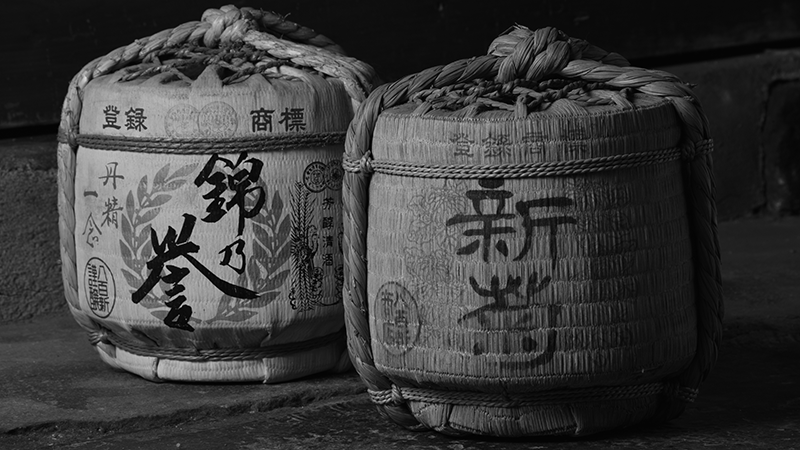
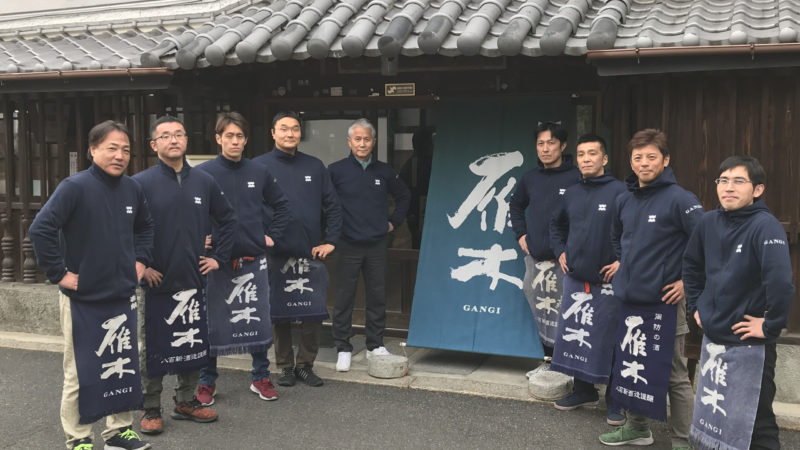
The third generation kuramoto’s brother briefly took over as the fourth generation, but was soon replaced by fifth generation Kobayashi Hisashige, who soon also doubled as tōji. With this new kuramoto/tōji leader, renewal came for Yaoshin Shuzo.
Hisashige changed the name from Yaoshin Shoten to Yaoshin Shuzo, ended the secondary business of beer and liquor wholesale, and focused all the company’s resources on saké brewing. With a solid base of training at the hand of former tōji Harada, Hisashige went through extensive trial and error until finally he achieved a satisfying batch of saké, in 2000. It was still rough, but the possibilities were evident, and that saké became the starting point for the return of Yaoshin. This new style was eventually released to the world under the name Gangi. That first release, a single batch from brewing to bottling, resulted in 600 bottles of unfiltered, unpasteurized, undiluted junmai saké. “Let’s make saké for saké lovers, and let’s get it on shelves,” was the company’s posture, and they began to slowly increase production and build up retailers, taking their time to do it right.
The Gangi lineup has expanded, but all Gangi label sakés are made based on the principles of only junmai brewing, with no activated charcoal filtering. In so doing, Yaoshin has created a brand with supporters all over Japan. And now, Gangi shipments have come to completely overshadow Yaoshin’s previous flagship label, Nishiki no Homare.
Hisashige changed the name from Yaoshin Shoten to Yaoshin Shuzo, ended the secondary business of beer and liquor wholesale, and focused all the company’s resources on saké brewing. With a solid base of training at the hand of former tōji Harada, Hisashige went through extensive trial and error until finally he achieved a satisfying batch of saké, in 2000. It was still rough, but the possibilities were evident, and that saké became the starting point for the return of Yaoshin. This new style was eventually released to the world under the name Gangi. That first release, a single batch from brewing to bottling, resulted in 600 bottles of unfiltered, unpasteurized, undiluted junmai saké. “Let’s make saké for saké lovers, and let’s get it on shelves,” was the company’s posture, and they began to slowly increase production and build up retailers, taking their time to do it right.
The Gangi lineup has expanded, but all Gangi label sakés are made based on the principles of only junmai brewing, with no activated charcoal filtering. In so doing, Yaoshin has created a brand with supporters all over Japan. And now, Gangi shipments have come to completely overshadow Yaoshin’s previous flagship label, Nishiki no Homare.
GANGI Another History
‘Island of Iwaishima’.
Yaoshin stands beside the Nishiki River, which flows through Iwakuni City, eastern Yamaguchi Prefecture into the Seto Inland Sea. The Seto has long been a place where communities and cultures mingled. The tiny island of Iwaishima out in the Seto was one such, and home to sake made for the kami—the divine spirits of Shinto. As that tradition grew, it created a rare seagoing guild of master brewers, or toji.When Yaoshin Shuzo was founded in 1877, rice was ported downstream on the river and unloaded here for brewing. The river rose and fell with the tides, so they used a stair-step style of quay where boats could dock no matter the level. That is called a “gangi”.
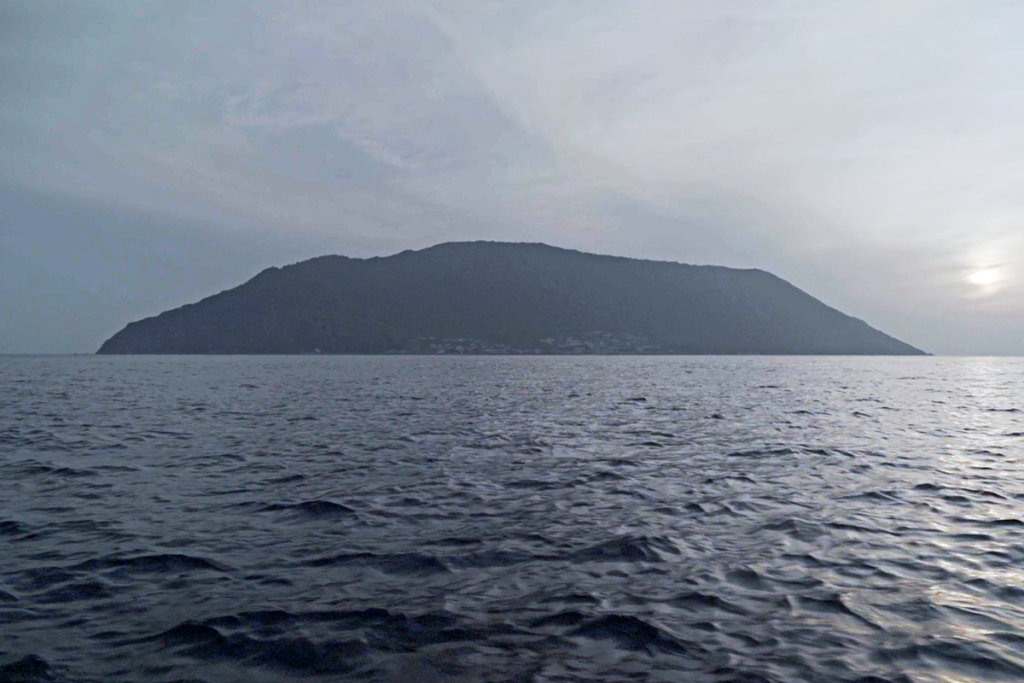
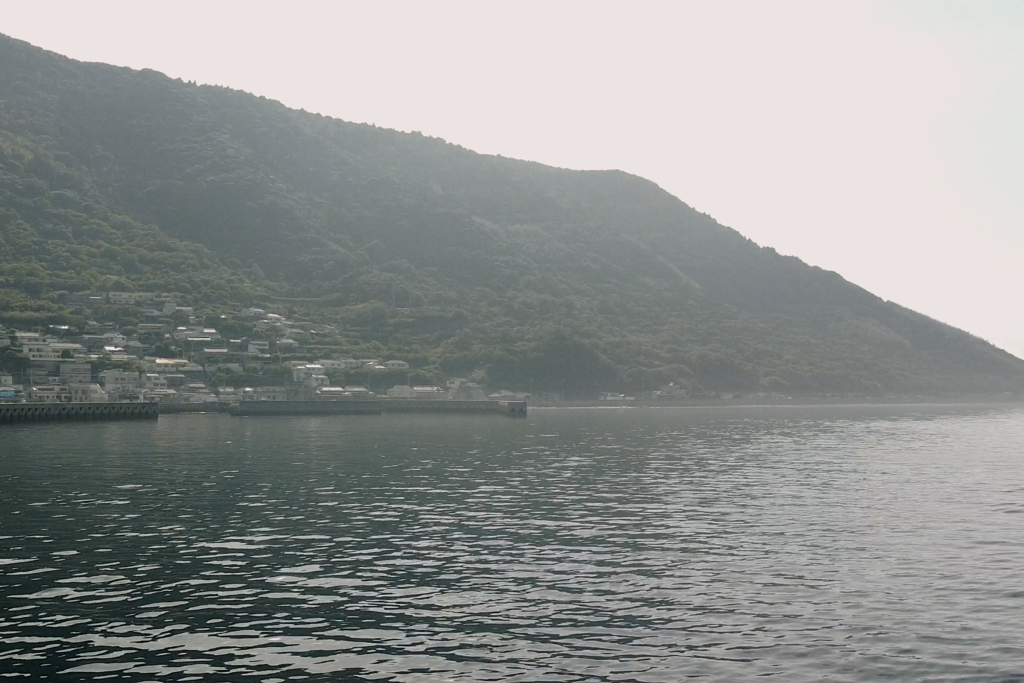
The brewers sailing from Iwaishima landed at the gangi, too. They were the foundation of Yaoshin Shuzo’s sake brewing, but as the island’s population fell, they disappeared. Kobayashi Hisashige took over from the last Iwaishima toji, but that was already a time when sake brewing was shifting to full time employees rather than seasonal toji. So, he trained staff who could take on that role, and have passed it on.
But looking back at Yaoshin’s history, the gangi was where rice came from the river and brewers arrived from the sea, so it was a central point for sake’s creation. The gangi stands at the heart of Yaoshin’s sake brewing.It is also the historic backdrop for this neighborhood, where children would play or jump into the river for a swim. That is why we feel Gangi is the ideal name for our sake.
But looking back at Yaoshin’s history, the gangi was where rice came from the river and brewers arrived from the sea, so it was a central point for sake’s creation. The gangi stands at the heart of Yaoshin’s sake brewing.It is also the historic backdrop for this neighborhood, where children would play or jump into the river for a swim. That is why we feel Gangi is the ideal name for our sake.


